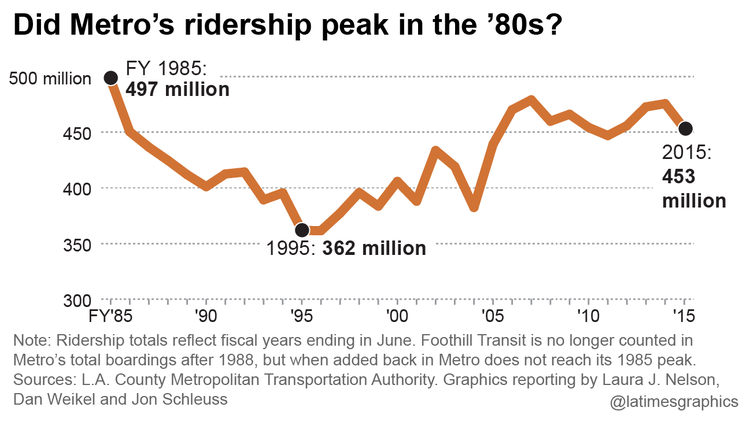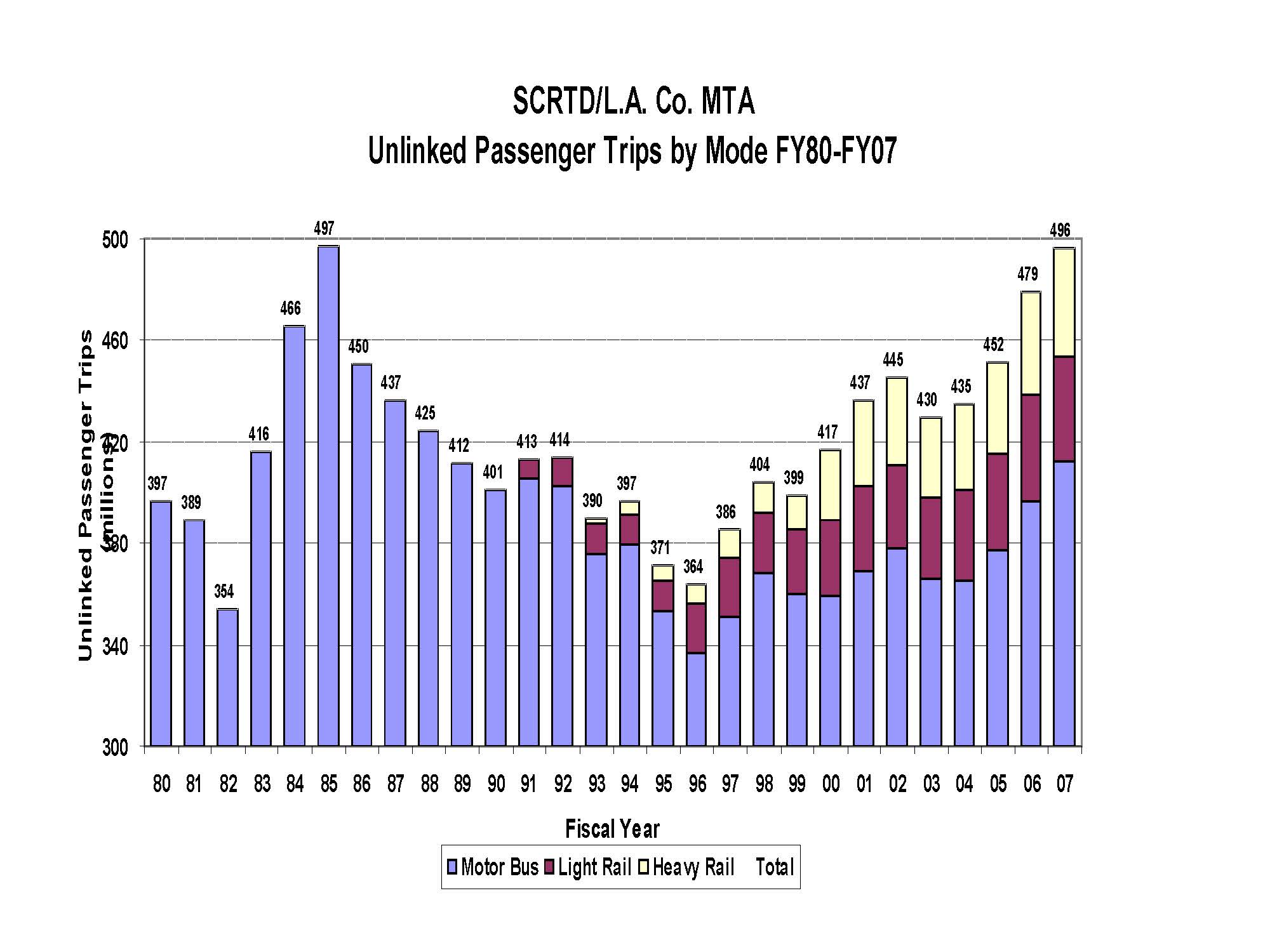There’s a lot of hand-wringing in transit circles in Los Angeles today, as the Los Angeles Times just ran a piece documenting the decline in transit ridership in Los Angeles, despite some big investments in rail:
The Los Angeles County Metropolitan Transportation Authority, the region’s largest carrier, lost more than 10% of its boardings from 2006 to 2015, a decline that appears to be accelerating. Despite a $9-billion investment in new light rail and subway lines, Metro now has fewer boardings than it did three decades ago, when buses were the county’s only transit option.
The article notes that the trend is happening nationwide and suggests multiple factors at play, such as “a changing job market, falling gas prices, fare increases, declining immigration and the growing popularity of other transportation options, including bicycling and ride-hailing companies such as Uber and Lyft.”
While the article highlights an important issue and puts it in a nationwide context, reporters Laura Nelson and Dan Weikel presented some misleading figures on Los Angeles ridership patterns. It starts with this graph illustrating the decline:
The problem with the graph is that the reporters are cherry-picking the absolute high water mark of transit ridership in Los Angeles.
As I describe in the book Railtown, Los Angeles County voters approved a sales tax measure in 1980 that not only launched the rail system in L.A., it kept bus fares to 50 cents for three years. That reduction in fares sparked a temporary and significant spike in ridership, as this graph of ridership from 1980 to 2007 illustrates:
So choosing 1985 as your baseline is like climate change deniers choosing an unusually warm year in the 1990s to show that global warming hasn’t really been happening since then.
In addition, the article is a bit unfair to Metro in citing the billions of dollars that have been invested in rail during this period of declining ridership. Sure, since 2006 the region has been spending a lot of money on rail, but those investments have not yet resulted in actual, open rail lines. Since that year, only the East Side Gold Line and half of the Expo Line (to Culver City) have opened.
Meanwhile, Expo to Santa Monica and the Gold Line extension to Azusa are on deck to open this year, while Crenshaw, the downtown Regional Connector and the subway extension down Wilshire are all under construction. Once they open, the region will only then see the true return on that investment.
I’m certainly glad that the Times is highlighting this important issue, and I’m hopeful it will spark calls to address it. One easy way to do so would be to lower fares, as the 1980s experience proves. Another way would be to build a lot more jobs and housing near rail transit stations, as we’ve documented in a recent report from Berkeley Law and Next 10.
But we shouldn’t let reports like these undermine the case for finishing the job of building out L.A’s rail system. The region is only halfway done, and with these new projects under construction and more attention paid to the station neighborhoods, the ridership numbers will surely increase from this temporary — albeit disheartening — setback.
11 thoughts on “L.A. Times Misleads On Metro Rail Ridership History”
-
Pingback: Today’s Headlines | Streetsblog Los Angeles
-
Pingback: Today’s Headlines | Streetsblog California
-
Pingback: What Factors Are Causing Metro’s Declining Ridership? What Next? | Streetsblog Los Angeles
-
Pingback: Los Angeles Transit Ridership — To Trend Or Not To Trend? | Ethan Elkind
-
Pingback: My Los Angeles Times Op-Ed On How To Boost Transit Ridership | Ethan Elkind
-
Pingback: Low Fares Beat Steel Wheels | The Antiplanner
-
Pingback: Reader Comment: Tom Rubin Takes On L.A. Rail And Ridership | Ethan Elkind
-
Pingback: BART Fares Should Vary Based On Demand | Ethan Elkind
-
Pingback: What The L.A. Times Missed In Their Story About Declining Metro Ridership | PenneyVanderbilt
-
Pingback: Falling Transit Ridership Is Becoming A Problem | Ethan Elkind
-
Pingback: 1 – Meme Weeding: Los Angeles Density | Traffic.Ventures Social
Leave a Reply
You must be logged in to post a comment.




